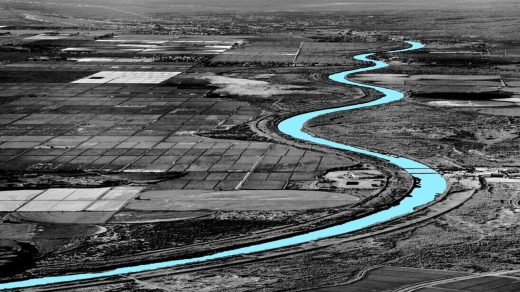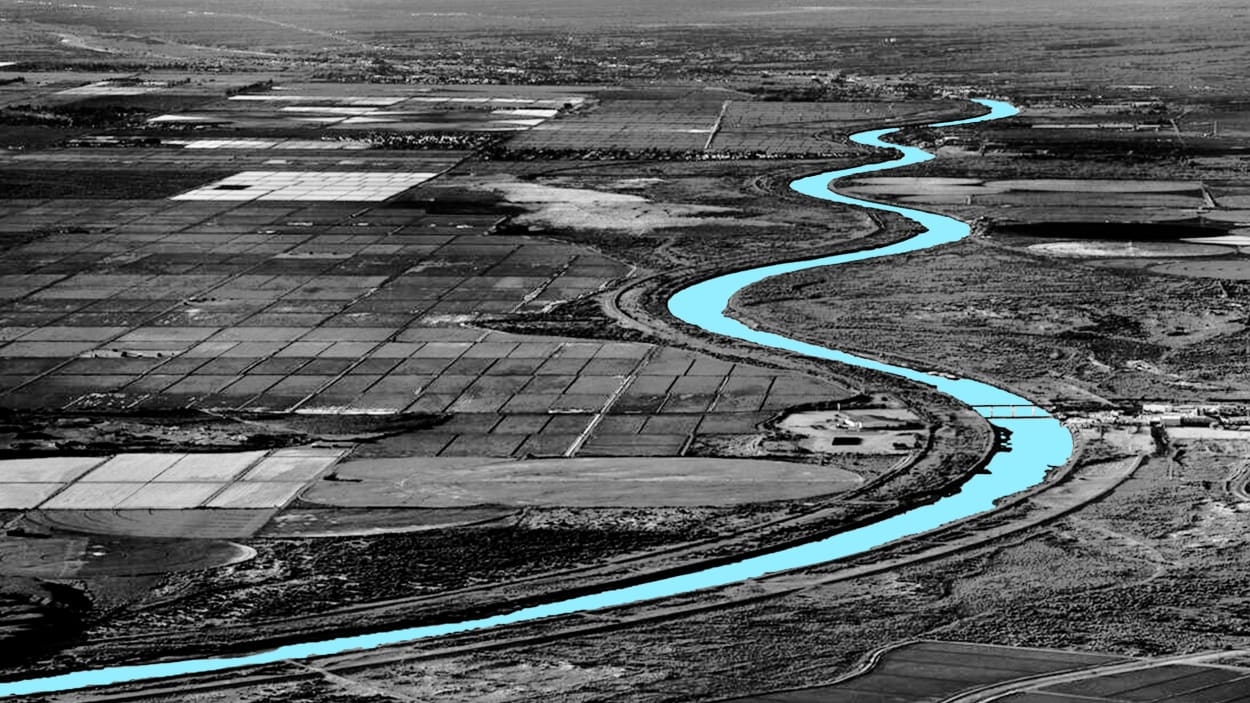Colorado River deal aims for unprecedented water cutbacks across 7 Western states
The seven states that rely on the Colorado River have agreed to an unprecedented water-usage cutback in the coming three years to keep the West’s most vital body of water from entering a critically low threshold. The U.S. Department of the Interior announced the news on Monday, declaring the deal—which comes after months of negotiations—a “historic consensus.”
Representatives from California, Arizona, Nevada, Utah, New Mexico, Colorado, and Wyoming said they have reached a consensus committing to use about 3 million fewer acre-feet of water by the end of 2026, with no less than half of that reduction occurring this year. All told, this would cut total water use on a scale without parallel in U.S. history, by about 13% in the Lower Colorado River Basin.
That basin is what some 40 million people, including those living on dozens of Indigenous reservations, rely on for drinking water and electricity. Our own overuse compounded by an apocalyptic-sounding “megadrought” is jeopardizing this source, which supplies major cities like Tuscon, Phoenix, and Los Angeles.
The toll from climate change and mismanagement has put two of America’s most crucial reservoirs—Lake Powell and Lake Mead—on the precipice of reaching so-called deadpool levels where the water will no longer flow. Mexico also relies on the river, after it snakes south. Moreover, there is a potential knock-on effect for both national and international food prices if the 5.5 million acres of farmland irrigated by the Colorado are impacted.
This deal signed by the seven states, it seems important to note, does not solve any of these ongoing or looming crises—but the parties argue it should buy us time to find a longer-term solution.
A push from the feds, a tug from nature
Last June, the federal government lit a fire under the states, noting that they collectively needed to work out a way to stop using 2 million to 4 million acre-feet of Colorado River water each year (as much as a third of the body’s annual flow), or else the government would work out a way for them. To put an acre-foot of water in context, it’s about 326,000 gallons, the amount needed to create an acre-sized pool of water that is one-foot deep. (Think of a football field flooded in calf-deep water.)
In exchange for doing as asked, the states’ plan requests that the federal government kick in $1.2 billion worth of funding (pulled from the 2022 Inflation Reduction Act) to offset the water conserved by the cities, tribes, and water districts—a reminder to the administration, which ended Monday’s announcement by bragging about the over half a billion dollars it’s already pledged to Colorado River improvements, that everyone’s in this together. President Biden’s Department of the Interior will now analyze the proposal.
“The Plan set forth . . . is not a panacea for the river, but rather a consensus solution that will help manage near-term water demands while serving as a bridge to negotiate the post-2026 operating criteria,” Southern Nevada Water Authority General Manager John Entsminger, a key player in the negotiations, said in a statement. “The Colorado River Basin has a warmer and drier future ahead and reducing water use, increasing water efficiency, and maximizing water recycling and reuse is paramount to a sustainable future.”
(19)



